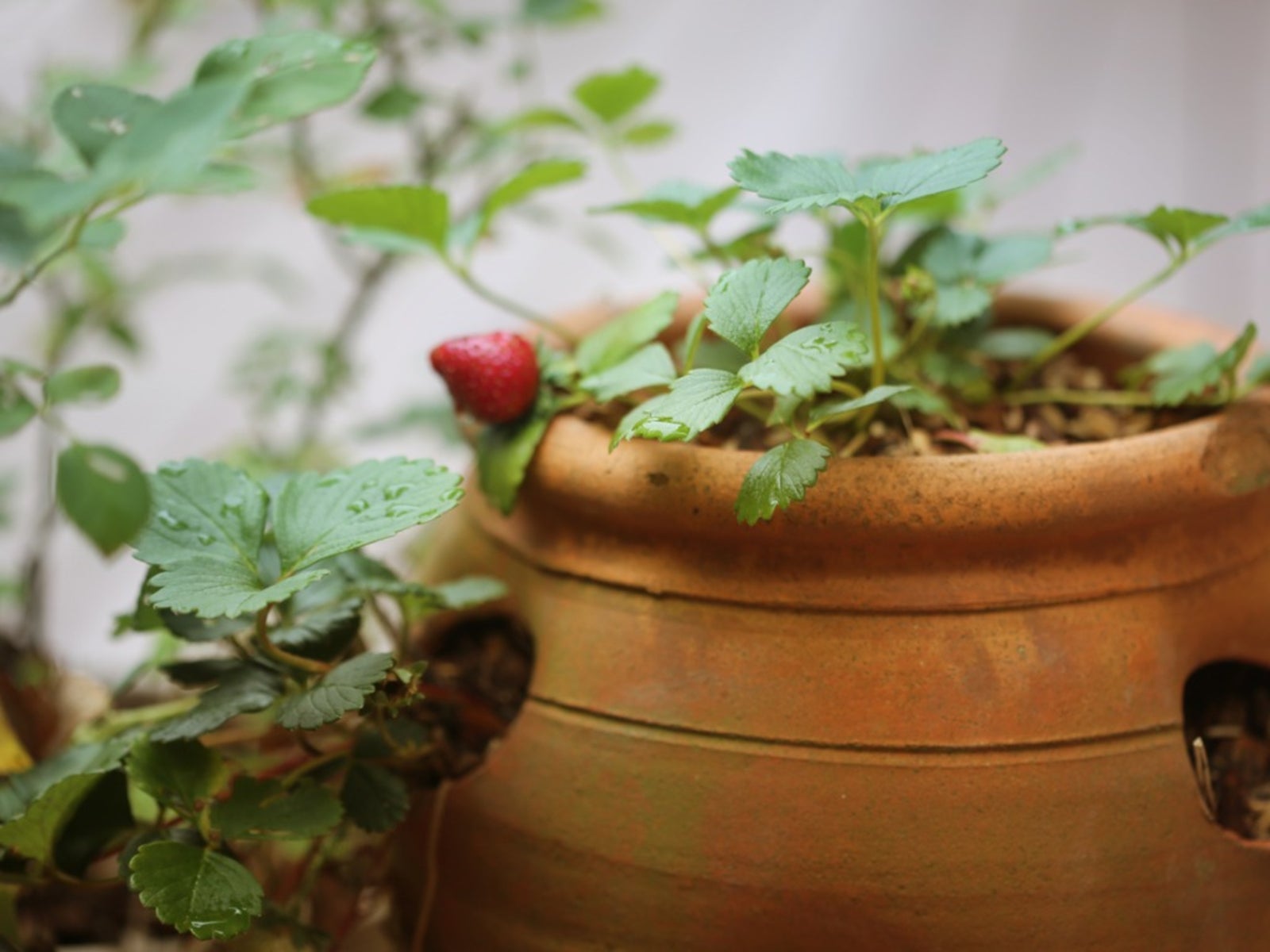Gardening With Strawberry Jars


Strawberry jars are nothing more than planters with small planting pockets along the sides. These were originally used for growing strawberries, but they aren't just for strawberries anymore. Nowadays strawberry jars are used for growing nearly any kind of plant imaginable. With an assortment of plants, some potting soil, a frozen bottle of water and imagination, you can create a striking addition for the garden. Let's learn more about gardening with strawberry jars.
Plants for Strawberry Jars
Strawberry pots can be a fun way to garden. Consider planting themed gardens such as an herb garden, a foliage garden, or a succulent garden. There are literally tons of plants that can be used for gardening with strawberry jars-- herbs, bulbs, flowers, vegetables, tropical foliage plants, succulents, and vines. Create a portable herb garden in a jar, filling each pocket of the strawberry planter with an herb of your choice. Popular herb plants for strawberry jars include:
Create a breathtaking fragrant garden with your favorite aromatic plants like:
There are also many succulent plants and flowers that can be successfully grown in strawberry planters. Some of these include:
Foliage plants can be added to create a more natural appearance. Choose numerous varieties to add texture and contrast to the strawberry planter garden. Trailing plants, such as ivy or sweet potato vine, also look great placed within the pockets of strawberry jars. The only requirement for using plants other than strawberries is to check their growing conditions to ensure they are compatible. For instance, plants that require the same amount of sun, water, and soil should be grouped together. When you begin selecting plants for the strawberry jar, choose plants that fit your desired theme as well as those that grow well in containers. The number of plants will depend on the number of planting pockets in your strawberry jar. Choose one plant for each pocket and at least three or four plants for the top. Since watering leaches nutrients in the soil, you should also fertilize your plants.
Types of Strawberry Pots
Strawberry jars are available in different styles and materials such as plastic, terra cotta, and ceramic.
- Plastic strawberry jars are lightweight, making them more prone to tipping over; however, they are probably the least expensive.
- Terra cotta jars are the most popular and very attractive, yet because of its porous qualities, these types require more watering.
- Ceramic strawberry jars are more decorative, heavier, and retain water well.
The type you choose should complement your garden style and theme.
Sign up for the Gardening Know How newsletter today and receive a free copy of our e-book "How to Grow Delicious Tomatoes".
How to Create a Strawberry Planter Garden
Once you have obtained your desired plants and planter, you are ready to begin gardening in the strawberry jar. Take a frozen bottle of water and carefully punch holes throughout the entire bottle. This can be easily achieved using a screwdriver and hammer, or an ice pick if you have one. Place a flat rock in the bottom of the strawberry jar and add some potting soil up to the lowest planting pocket. Carefully tuck the plants into the lower pockets. Place the bottled water firmly into the soil and begin adding soil until reaching the next row of planting pockets, placing the plants into their designated pockets. Continue filling the strawberry jar with soil, repeating the steps until all pockets are filled with plants. The top of the bottle should be peaking out through the top of the strawberry jar. Place the remaining plants around the neck of the bottle. Once the water begins thawing out, it will slowly seep through the holes, keeping your plants moist and happy. Use the top opening of the bottle to replace water as needed.
Strawberry Jar Fountain
Using a re-circulating pump and appropriate rubber tubing (available in kits), you can even create a lovely water fountain with strawberry jars. Simply use a terra-cotta bowl large enough for the strawberry jar to fit in as the fountain's base to hold and catch the falling water. You will also need a shallow terra-cotta saucer that fits onto the top of your strawberry jar. The pump's power cord can be pushed out through the drainage hole of the strawberry jar or one of its side pockets, whichever works for you. Secure the pump in the bottom of the strawberry jar with stones and run the length of tubing up through the top of the jar. Drill a hole into the center of the shallow dish and place it on top of the strawberry jar, running the remainder of the tubing through. To prevent leaking, you may want to seal around this hole with suitable sealant. You have the option of adding a fitting that sprays, gurgles, drips, etc. depending on the effect you want to achieve. Arrange some water-loving plants of your choice into the basin and fill in around them with decorative rocks. You can also add some decorative rocks to the top saucer, if desired. Fill both the basin and strawberry jar with water until it begins to overflow on the lowest pocket or until the pump is covered completely with water. Once filled, the water is pumped up through the tubing and bubbles onto the saucer and over the rim into the basin below. Be sure to add more water as it evaporates, so the pump does not run dry. Gardening with strawberry jars is not only easy but fun. They are well suited for any garden, especially small ones such as patios. Strawberry jars can be used for growing various plants or even tranquil fountains. Nothing adds beauty to the garden quite like the versatile strawberry jar.

Nikki Tilley has been gardening for nearly three decades. The former Senior Editor and Archivist of Gardening Know How, Nikki has also authored six gardening books.